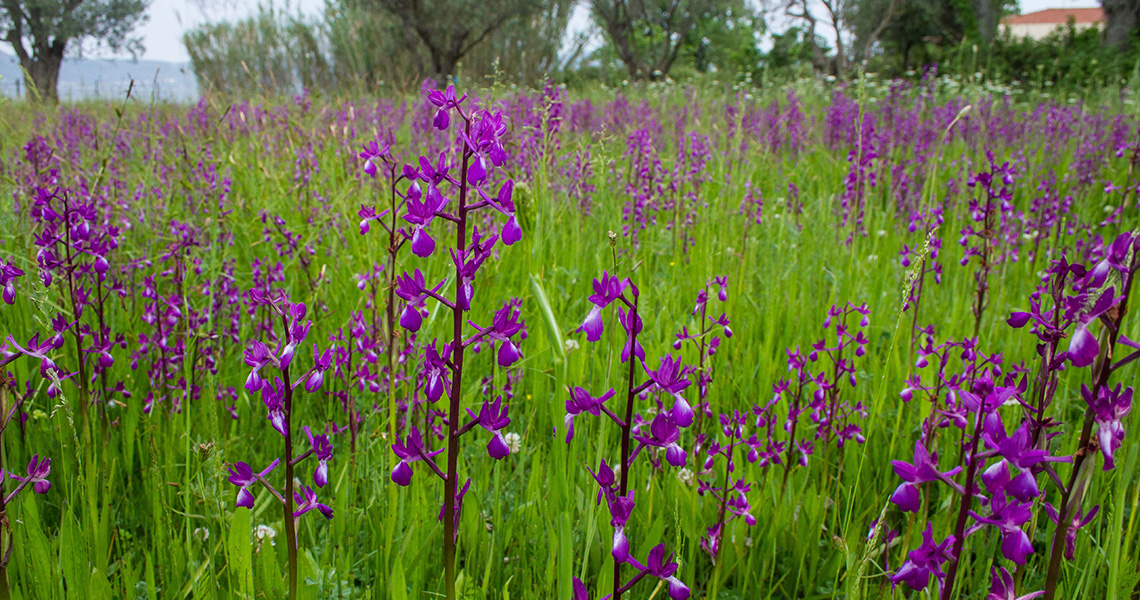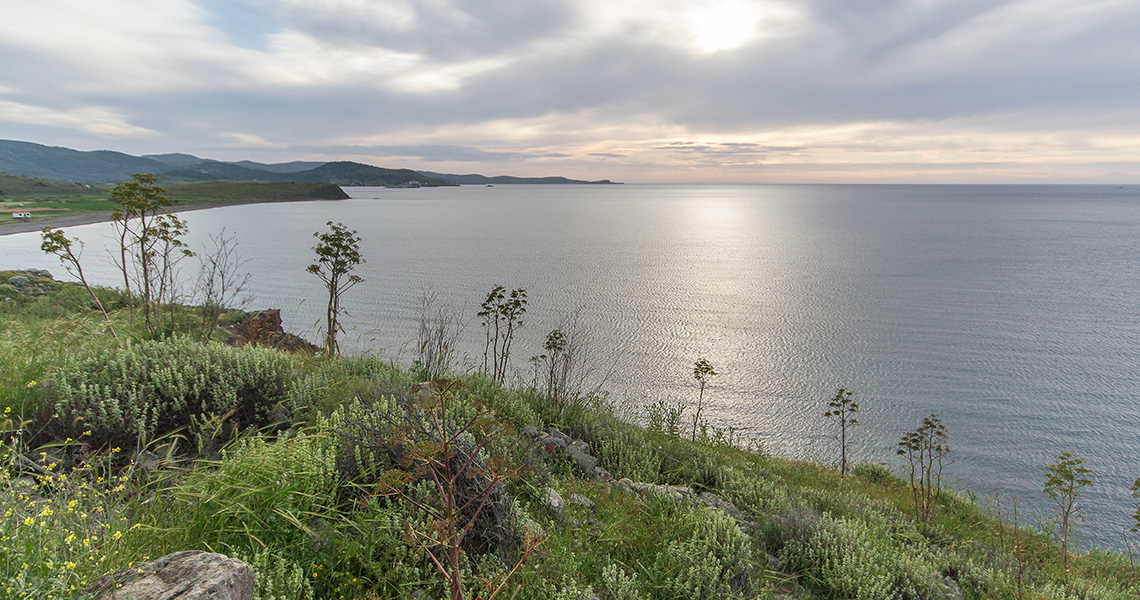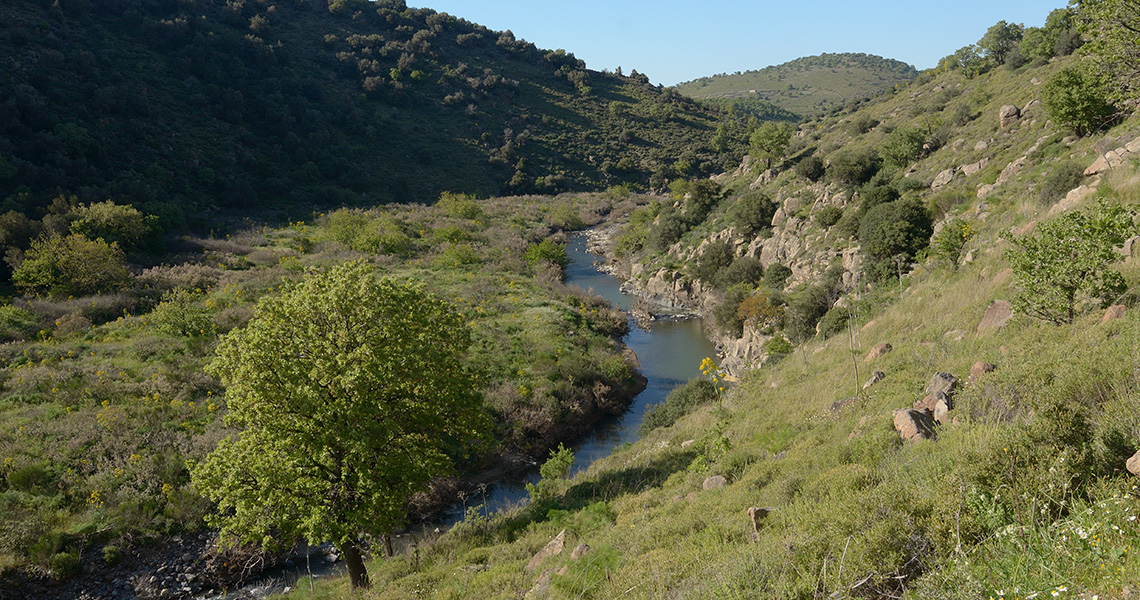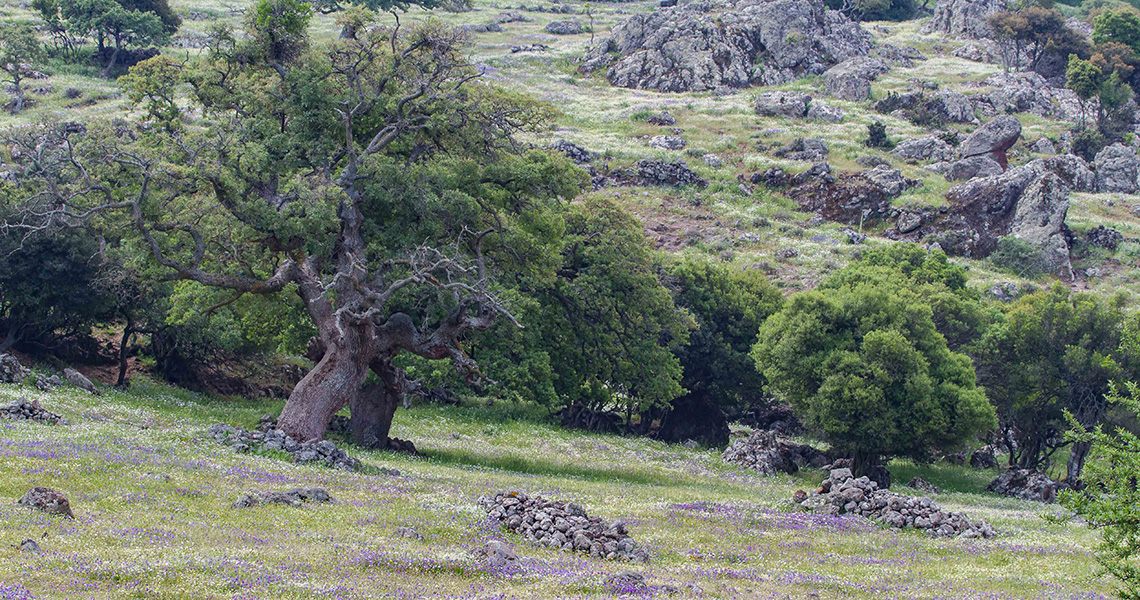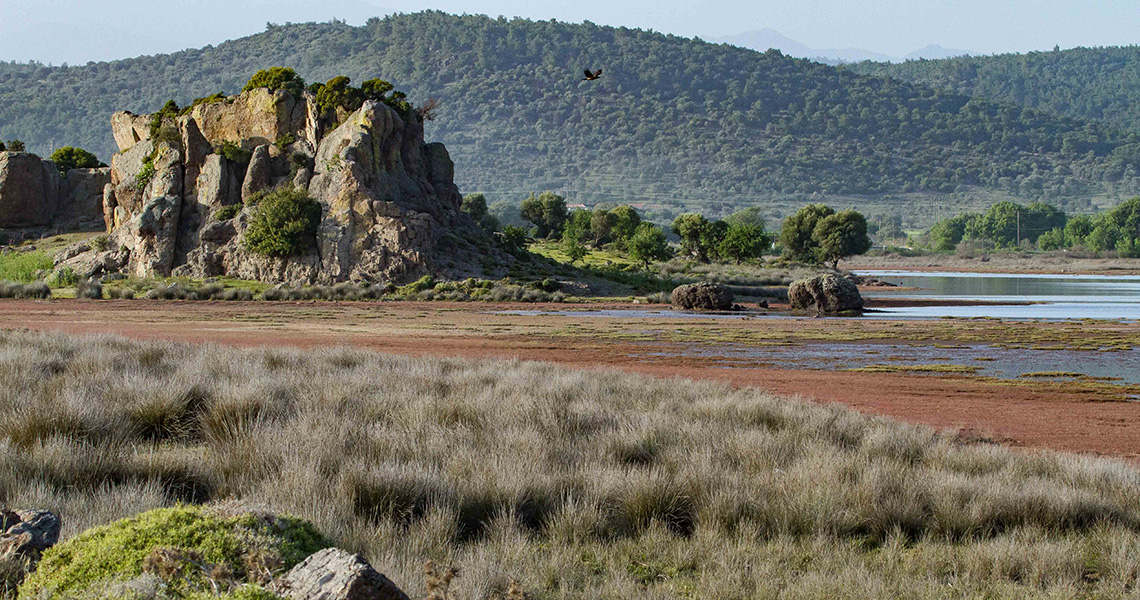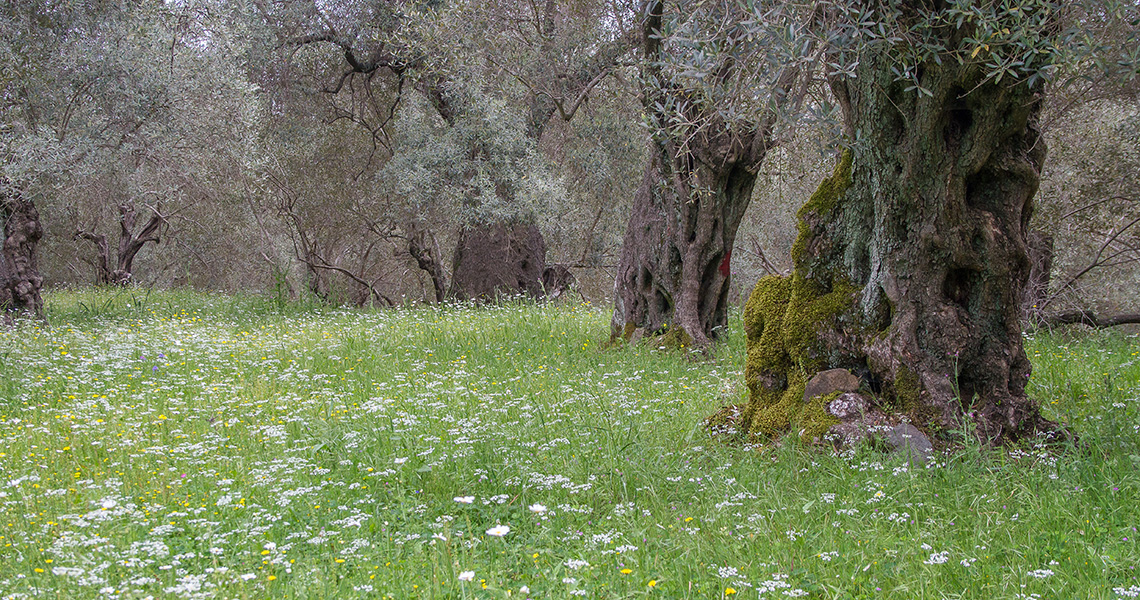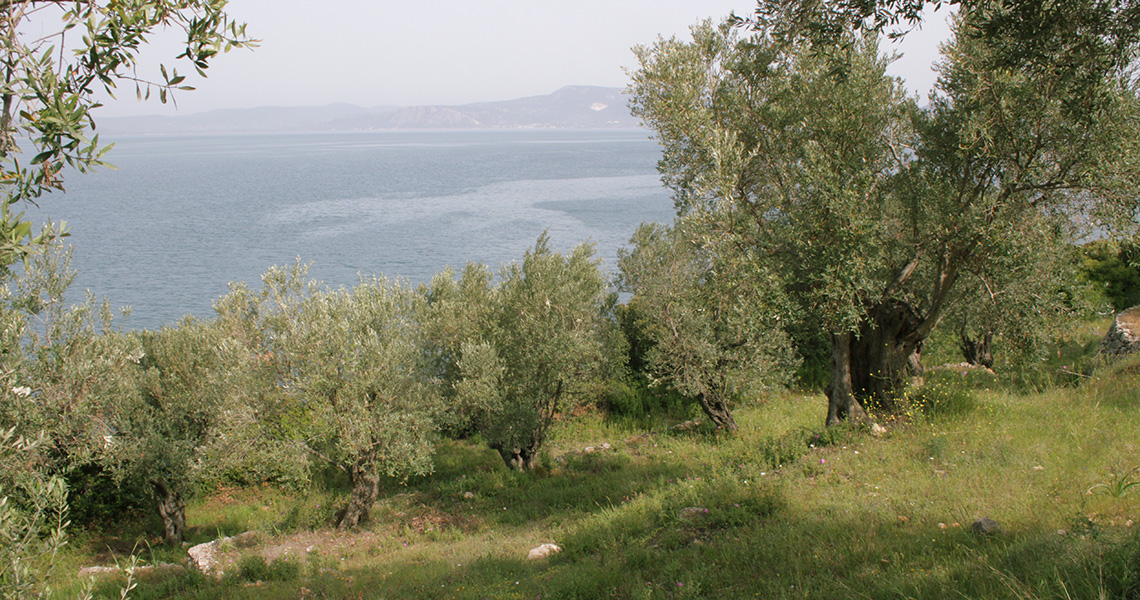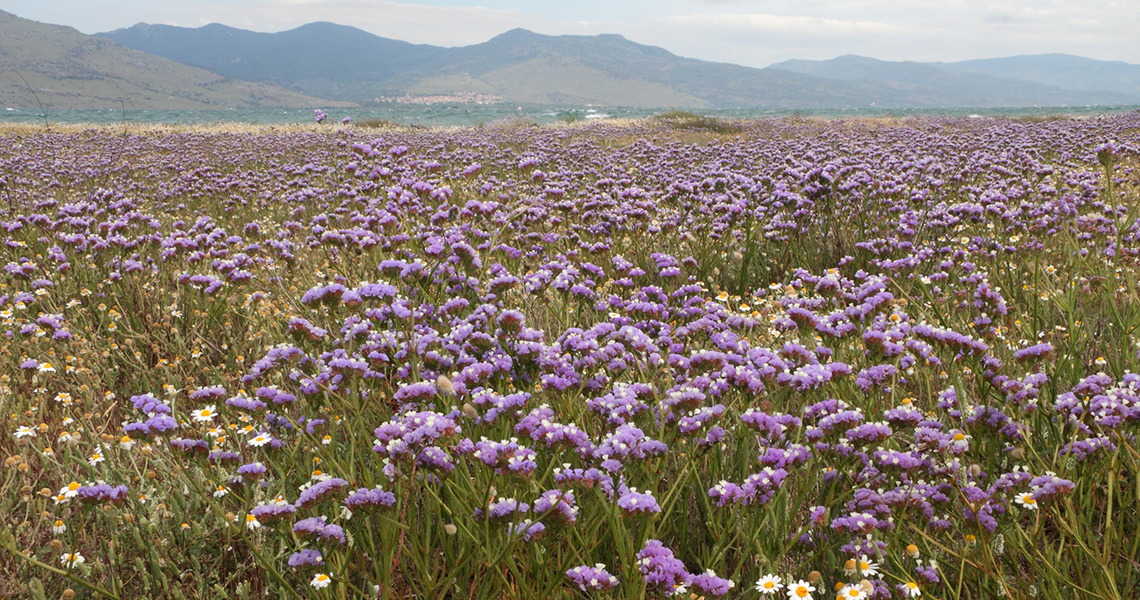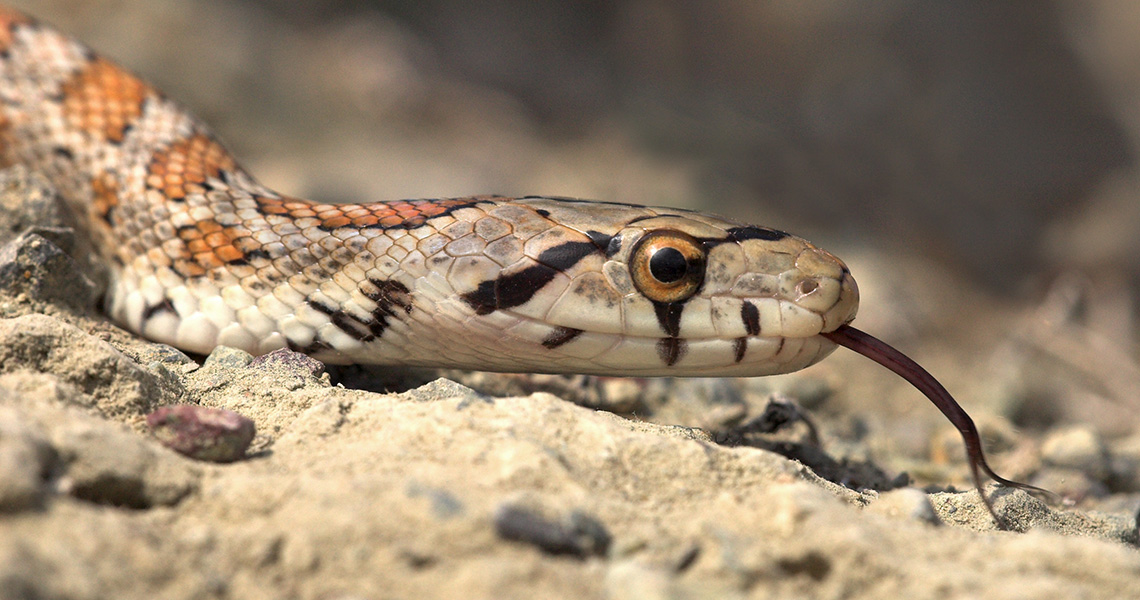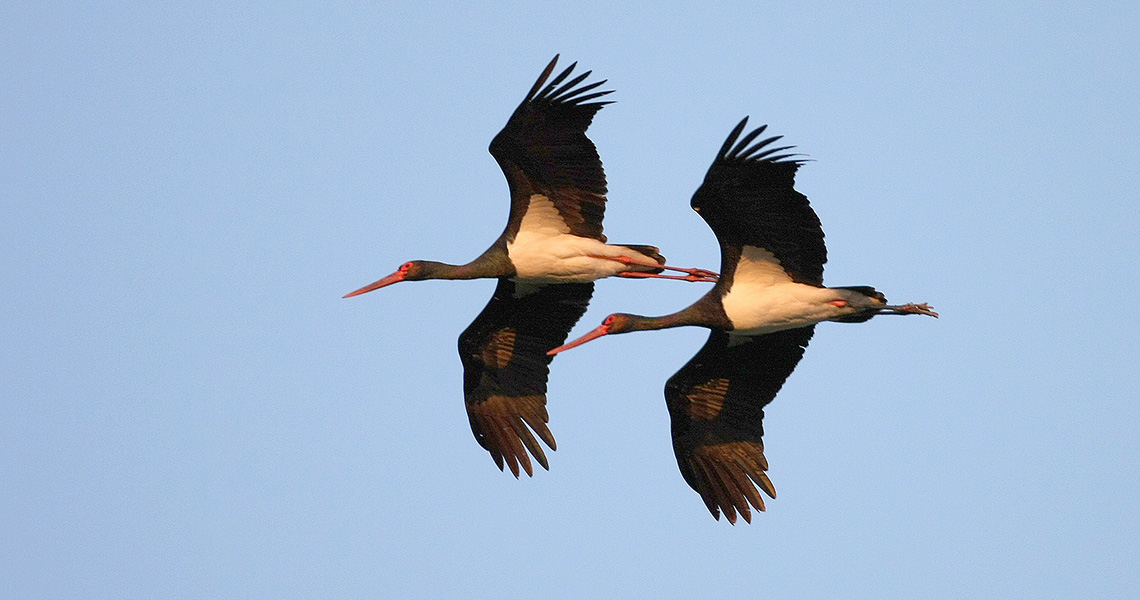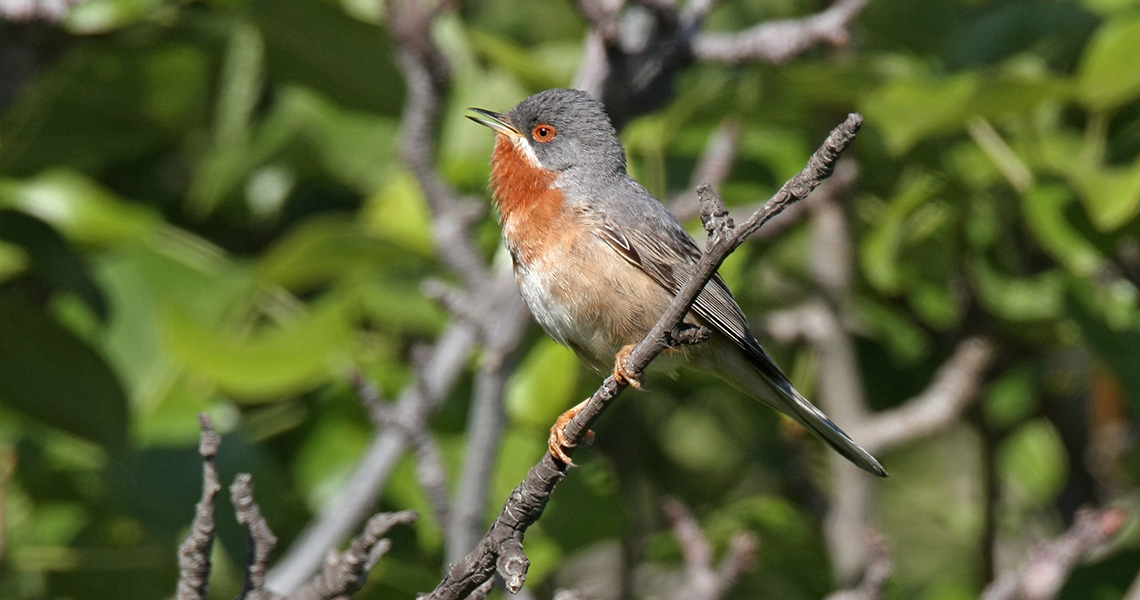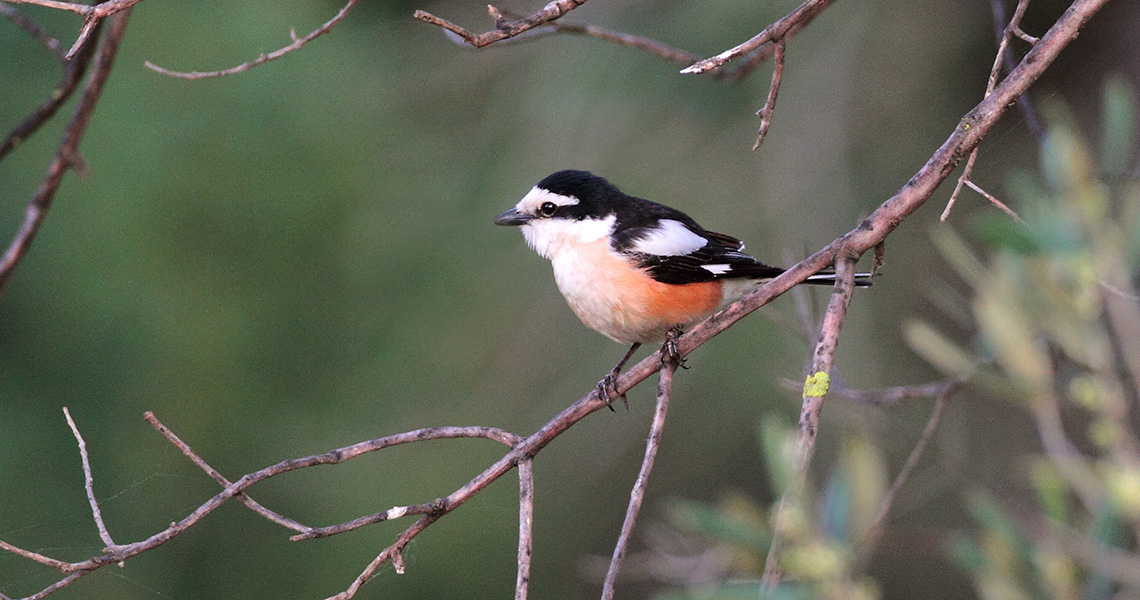Nature and Wildlife of Lesbos – by Crossbill Guides
Naturalists, birdwatchers, ramblers, photographers and all other nature lovers, a warm welcome on this page about the nature and wildlife of the island of Lesbos (or Lesvos), Greece. This website accompanies the Crossbill nature travel guide with the same name. This is an online Crossbill Guide ‘light’ for the armchair traveller. It offers some general insights and images to warm you up for your stay, plus some practical information, sites and a free route from the guidebook. Enjoy!
Lesbos is Greece’s third largest island (after Creta and Evvia) and lies only 10 km from the mainland of Turkey in the Aegean Sea. With a bit of fantasy, Lesbos is shaped like the letter M, with two bays on the south side.
Lesbos is a mountainous island. In many places, it is wild and rocky, but in others it is gentle. Mount Olympus is at 967 the island’s highest peak. The island’s capital is the town of Mytilini (30,000 inhabitants) which lies on the east side of the island. The rest of the roughly 45 by 75 km island has numerous, mostly small villages. Currently, approximately 100,000 people live on Lesbos.
Lesbos’ attractions are its East-Mediterranean wildlife, which includes many ‘Turkish’ species that have their westernmost distribution on Lesbos (see below for details). Furthermore, the island is famous for its spring migration of birds. Less known, but equally attractive, is the superb flora, in which the orchids take centre stage. Many thousands of these flower in spring, roughly at the same time as the spring bird migration takes place.
Landscape of Lesbos
As a result of the islands’ geology, Lesbos has two very different landscapes. On the western side, volcanic rock dominates. The soil is very shallow and rocky and in most places, supports only a vegetation of dwarf shrubs, known as phrygana. Trees are mostly restrained to the river valleys.
In the north and east, the soils are deeper and the landscape is lusher. Here you find the classic Mediterranean mix of tall, evergreen scrubland (macchia) and woodland. Woodland consists mostly of evergreen oaks, but locally there is also Turkish Pine (Pinus brutia) and on limestone soils, extensive old olive groves.

Coastal wetlands
The coast of Lesbos is largely rocky, but in several places there are small wetlands. The largest of these are those at the Bay of Kalloni. Since the bay extends so deep into the island, these are pretty much in the heart of the island – not where you’d expect coastal marshes. The core area consists of saltpans, but there are large areas of grasslands and marshes with saltwort present too. The Saltpans of Kalloni are rich in waders and herons.
Elsewhere, there are small wetlands wherever there are river mouths. Lesbos has quite a few rivers, but since the island is small and the mountains not very high, the wetlands tend to be small and dry out in summer. Even though many of these ‘wetlands’ are not more than a small meadow and a few puddles, they are extremely important for birds, particularly during spring migration.

Rivers and streams
Streams are veins of life all over the Mediterranean, and Lesbos is no exception. Most of them are lined with trees, particularly with Oriental Plane Trees (Platanus orientalis). This tree might well have the biggest girth of any European tree species. Lesbos certainly has jaw-dropping, spectacular specimens. The damper and more nutrient-rich soils of the river valleys and the soothing shade underneath the canopy make the river valleys to great habitat for plants. There are also a number of rare dragonflies, butterflies and birds.

Scrubland
Scrublands come in the form of Macchia and Phrygana. Technically, the difference between the two is the height, macchia being tall (up to man-sized) and phrygana being low (up to knee-height). On Lesbos, these scrublands are also linked to different soils and therefore are found on different areas of the island.
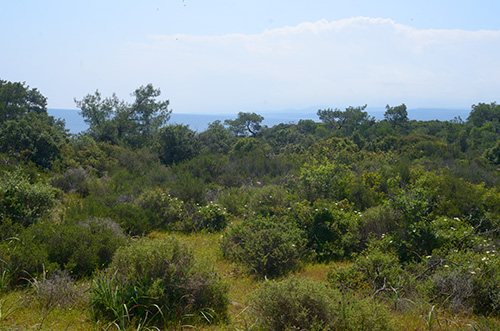
Macchia grows mostly in the east and phrygana in the west, giving the two parts of the island a very different feel. The east is lush, colourful and flowery, at least in winter and spring. The west has a wild and rugged beauty. The plant species also differ strongly, as do the birds and reptiles.
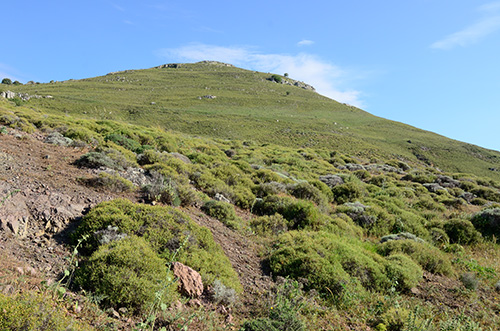
Forests
Forests are mostly found on the higher slopes and in the northern part of the island. In the latter area, oaks dominate, in particularly Valonia Oak (Quercus macrolepis). These forests are mostly open, with flowery grasslands between the trees – a structure that reflects grazing of cattle and pigs. In the mountains of the western part of the island, Turkey Pine (Pinus brutia) is the dominant tree. These forests are denser. Close to the coast in the Gulf of Kalloni, there are some beautiful Turkish Pine forests with massive trees. This is the haunt of the rare Krüper’s Nuthatch (see species top ten).
Around Agiasos in the east, there are also handsome beautiful chestnut groves and forests, which have a beautiful spring flora with wild tulips, anemones and orchids.

Olive groves and arable land
Olives are one of the main agricultural crops of Lesbos. The groves are mostly ancient with trees that are centuries old. Importantly, they are usually not ploughed, which means that bulbous plants do well underneath the trees. Many of the olive groves are full of orchids in spring. The olive groves tend to hold fewer birds than most other habitats in Lesbos, but they are the key habitat for the sought-after Masked Shrike.

Cliffs and rocky slopes
Rocky terrain can be found all over Lesbos, from steep coastal cliffs and rocky islets to the peaks of Mount Olympus. The thin soil and extreme drought (particularly those facingfaces south) make them a harsh environment for plants. Nonetheless, there is a large number of specialist species to be found. For reptiles and insects, the warm rock surface combined with the many shady crags create an ideal location to live. The same goes for birds. Several species are unique to the cliffs, such as Eleonora’s Falcon (on coastal cliffs), Blue Rock Thrush, Chukar and Western Rock Nuthatch. The latter two are again species of the eastern Mediterranean.

The naturalist top 10
Ten highlights of your visit to exploring Lesbos
Witness many thousands of birds passing over Lesbos daily. With many of them stopping and resting, Lesbos is one of the most exciting places to see bird migration. A large proportion of the Eastern European species of migratory bird species turn up on Lesbos.
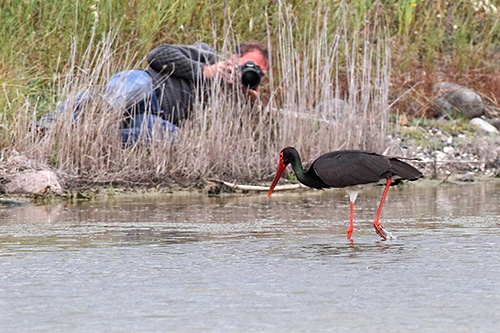
Grab your binoculars. Besides migratory birds, the breeding birds of Lesbos are very exciting as well. The Eastern Mediterranean is a hotspot of bird diversity, and Lesbos has therefore many species, such as Olive-Tree Warbler, Cinereous Bunting, Long-legged Buzzard and Rüppell’s Warbler.

The petrified forest is a geological fluke. 17 million years ago, a forest was covered in volcanic ash after a major volcanic eruption. The outburst was sudden and the ash completely covered the trees, which caused them to fossilize perfectly.
Lesbos has, together with Arizona, the most well-preserved petrified forest in the world.
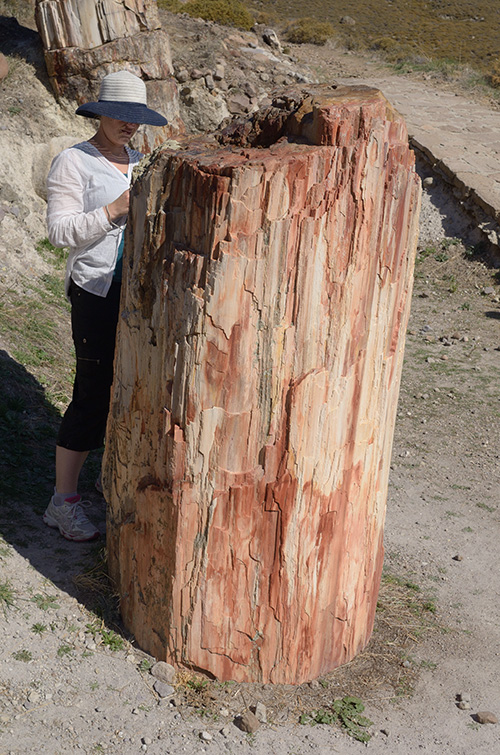
Lesbos is one of Europe’s richest spots for wild orchids. Hundreds of thousands of specimens of almost 100 species are present (depending on who’s taxonomy you follow). Species like Holmboei’s Butterfly Orchid (Platanthera holmboei), Reinhold’s Bee Orchid (Ophrys reinholdii), Komper’s Orchid (Comperia comperiana). Holy Orchid (Anacamptis sancta) and Spurred Helleborine (Cephalanthera epipactoides) are amongst the most more spectacular species the continent has to offer.
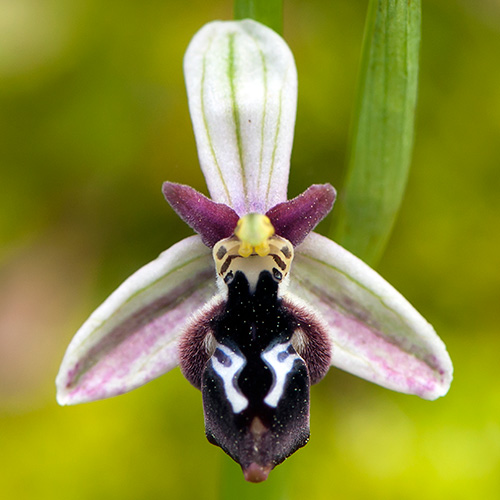
Walk through centuries old olive groves and enjoy the beautiful wildflowers. Visit the olive press museum in Papados.
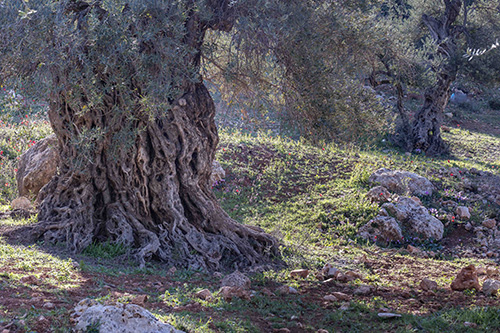
The ‘pub grub’ in the Tavernas from Lesbos is often made from local produce. The meals are usually simple, but very good.

Visit the rivers with their beautiful riparian forest. The massive plane trees are truly impressive.

Explore Lesbos on foot. It is one of the more attractive Aegean islands for rambling. The versatile landscape is beautiful and has large areas of shady forests. Centuries old trails connect the mountain villages.
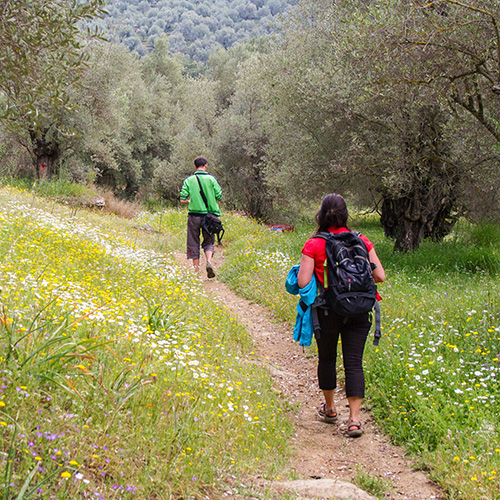
Head to the pine forests and scrublands for Turkish specialities. Lesbos is one of the few islands where many Turkish species occur, such as Ottoman Viper, Kruepers Nuthatch and Masked Shrike.

Go ‘herping’: carefully lift logs or even pieces of garbage to look for lizards and snakes underneath.

Birds, butterflies and wildflowers – The flora and fauna of Lesbos
The westernmost population of the dragon-like agamas, various birds and orchids that have their main distribution in Turkey and a spectacular migration of mainly eastern European bird species – Lesbos has a superb flora and fauna. Most species are found in spring, with the last week of April and the whole of May being the most impressive period. Orchids and a few butterflies (e.g. False Apollo) are a bit earlier, occuring in April and even in March.
Flora
Although most people visit Lesbos for its birds in spring, the flora is just as attractive in this period. There are massive numbers of orchids, particularly in the limestone areas in the eastern part of the country. There is even a species, Ophrys lesbis, that is nearly endemic for this island.
Typically for Mediterranean areas, there are many orchids of the ‘bee orchid group (Ophrys), including truly beautiful species like Ophrys ferrum-equinum (Horseshoe Orchid), Ophrys cornuta and Ophrys reinholdii. Other true beauties are Holy Orchid (Anacamptis sancta), Spurred Helleborine (Cephalanthera epipactoides) and, the most impressive of all, the rare Komper’s Orchis (Comperia comperiana).
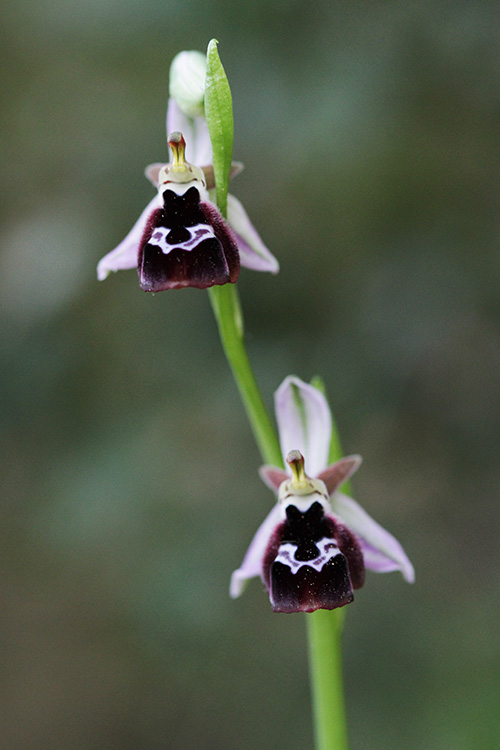
The flora of Lesbos has many more spectacular wildflowers, including several fritillaries, tulips, paeonies, cyclamen and the beautiful yellow-flowering Pontic Azalea (Rhododendron Azalea).

Mammals
As often on smaller islands, Lesbos has a limited number of mammal species. There are Fallow Deer and Wild Boar (both introduced), Pine Marten and Red Fox, Hares and Rabbits. The most attractive species is the Persian Squirrel which lives throughout the woodlands of the island. This is the westernmost location of this species, which’ main distribution stretches out from Iran to Turkey.
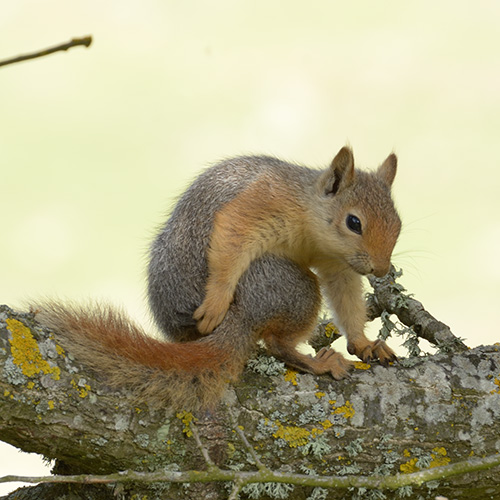
Birds
Lesbos’ birdlife is brilliant, both because of its breeding birds and because of its migrants in spring. The autumn migration is much less pronounced. In spring, migratory birds follow the Turkish coast and fly directly over Lesbos (which lies close to Turkey). The funnel-shaped bay concentrates the migration, which is therefore magic. At the base of this bay, there is a large area of saltpans with accompanying bushes and open grasslands with many arrivals and departures of migratory birds every day.
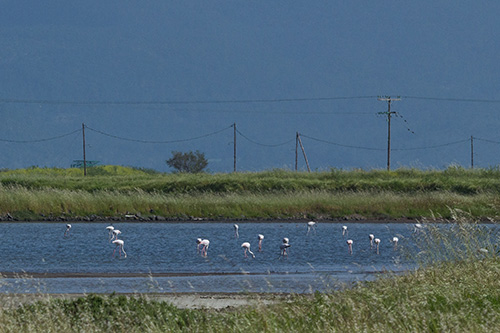
Eastern European species, Mediterranean species and ‘Pontic’ (steppe) birds pass through. Among the many noteworthy birds are Red-footed Falcon, Little Crake, Levant Sparrowhawk, Broad-billed Sandpiper, Rosy Starling and Pallid Harrier, but the many herons, waders, bee-eaters, rollers and passerines like, Lesser Grey and Red-backed Shrikes, Black-headed Buntings, etc. are at least as impressive.

The migrants are accompanied by a rich community of (east) Mediterranean birds that stay on Lesbos to breed. Among them are ‘familiar’ species like Hoopoes, Bee-eaters, Woodchat Shrikes, Eastern Subalpine Warbler and many more. However, they are accompanied by a good number of birds that are essentially Turkish or Middle-Eastern that are withinwithing Europe only found on Lesbos and a few other areas in the Balkans and Greece: Chretzschmar’s and Cinereous Bunting, Krüpers and Western Rock Nuthatch, Rüppell’s Warbler, Masked Shrike and Sombre Tit.
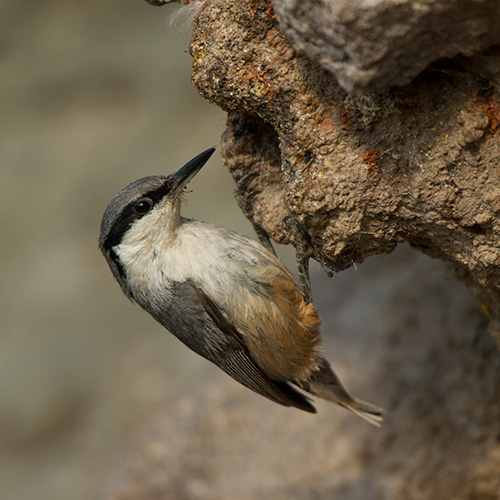
Reptiles of Lesbos
Given the fact that Lesbos is an island, the diversity of reptiles is astonishing. Only mainland Greece and Turkey have a more diverse reptile fauna. There are tortoises and terrapins, a large variety of snakes, geckos and many other lizards. Again it is the large number of species that are limited to Greece and/or Turkey that stand out: Cat Snake, Sand Boa (the only European representative of the tropical group of the boas), Ottoman Viper (the most venomous snake of Europe) and the strange, subterranean Worm Snake.
Fairly easy to see is the the Starred Agama, which lives in rocky areas and stone walls. This relatively large, dragonlike lizard (not dangerous) is the only European representative of the agamas that otherwise live in the dry regions of southern Asia and Africa.

Butterflies and dragonflies of Lesbos
The diversity of the two most famous groups of insects, the butterflies and the dragonflies, is rather limited on Lesbos. Nevertheless, there are a number of special species in both groups. In rocky areas, you may come across the unique False Apollo. It only flies in early spring. Somewhat later, there is Eastern Festoon and Southern Swallowtail. And of course, there is a good range of blues, graylings and skippers.

Among the dragonflies, the beautiful Odalisque (Epallage fatime) and Violet Dropwing (Trithemis annulata) are there to impressive. The Turkish Goldenring (Cordulegaster picta) is Europe’s largest dragonfly and occurs along sandy forest streams, together with Turkish Clubtail (Gomphus schneiderii). Eastern Spectre (Caliaeshna microstigma), Small and Epaulet Skimmers (Orthetrum taeniolatum and O. chrysostigma), Blue-eyed Goldenring (Cordulegaster insignis), Dark Spreadwing (Lestes macrostigma) and Black Pennant (Selysiothemis nigra) are other local delights.

Top 10 species
Ten superb plant and animal species of Tenerife
The beautiful Masked Sshrike only breeds in a small area in the eastern Mediterranean. Unlike other shrikes it can be elusive as it hides in bushes or perches on the lower branches. Although not easy to spot, it is quite numerous in Lesbos’ olive groves.
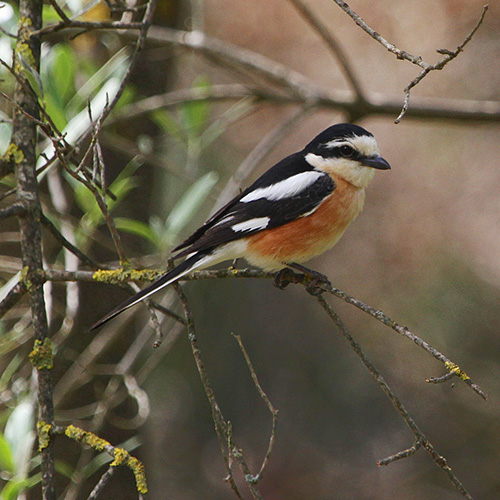
Another ‘Turkish’ bird, that only occurs outside that country in Georgia and a few Greek Islands, including Lesbos.

Two buntings with a small world distribution, which is centred around Turkey. Both live near rocky outcrops in sparse phrygana vegetation (Cretzschmar’s is on photo here).

The Comper’s Orchid scores high on the list of most impressive orchids of Europe. It is remotely related to the lizard orchids (Himantoglossum) but has an unmistakable appearance. It is another ‘Turkish’ species (but it is severely threatened in Turkey) with a population on Lesbos. It flowers later than most orchids, at the end of May.

Several tulip species grace the olive groves of Lesbos, including two, large, bright red species. It is amazing to see this ‘garden flower’ in its natural environment.
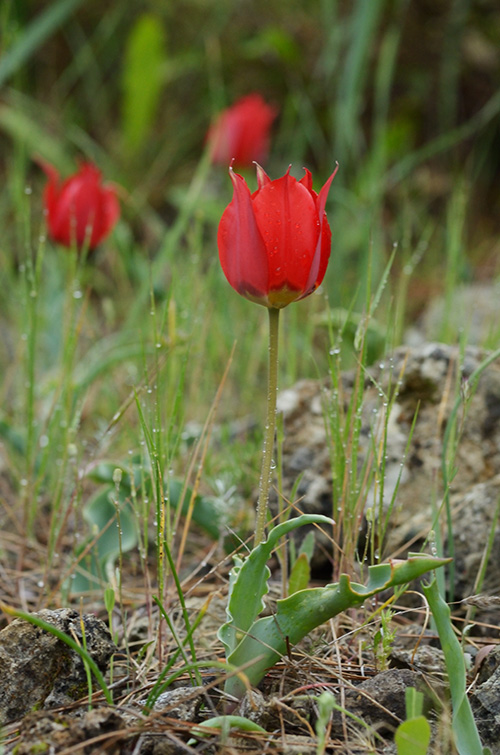
The Sand Boa is the only species of Boa in Europe, and occurs locally from southern Bulgaria, Greece and further into Turkey. It lives largely underground (often in the sand) and emerges in the evening.
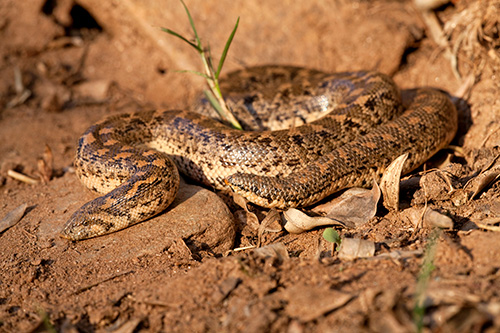
Agamas are spectacular, large lizards of steppes and deserts of Asia and Africa. Only one species, the Starred Agama, reaches Europe, where it is found on a few Greek Islands close to the Turkish coast, Lesbos being one of them. These little dragons love basking in the sun on stone walls and rock faces.

Of the many small, Mediterranean Warblers, the Rüppell’s is perhaps the most handsome. It is a macchia and phrygana-bird and like many other Lesbos delights, it is a species of the eastern Mediterranean region.
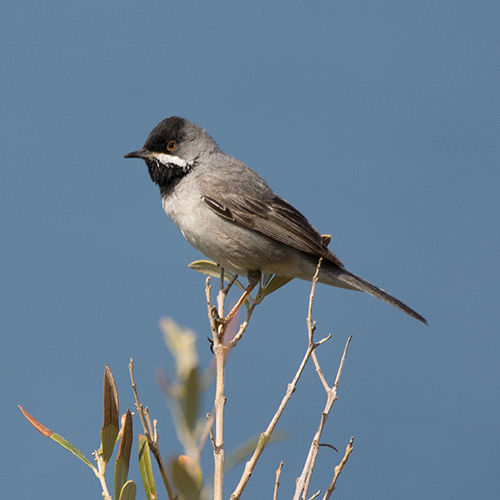
This orchid only grows in a small area of Lesbos and, curiously, in a small area in southwest Turkey, quite far from Lesbos.

This handsome falcon passes through Lesbos on spring migration and is representative of the large and varied group of migrants that make this island a top-notch birdwatching site.

Routes and practicalities
Lesbos is an easy island to travel around, but it is just too large to explore conveniently from one base. Staying at two or three places is recommended if you want to explore to cover the whole island. The island has an extensive bus system with a good website in both Greek and English, but most buses run only a few times per day. This means that, in the end, the hire car remains the easiest and most convenient way to travel.
Sustainable tourism
Although it is hard to travel to Lesbos in an environmentally friendly way, it is easy to support the landscape and nature conservation whilst you are there.
- Especially in the villages, a lot of food is grown organically even if it isn’t labelled as such. Seek out the local food in the small village establishments. Most dishes have seasonal ingredients that come directly from the land or the forest.
- Use the small village hotels and BnB’s rather than the large chains on the coast, so the local community receives income from your visit.
- As above – buy in the local shops and buy local produce. There are many women’s cooperatives in the villages that maintain the local crafts and culinary traditions. It is a feast to get to know them and supportsupports the local community.
- Tap water is safe to drink as well as water from the many natural water sources.
- Don’t be reticent, hold back and show that tell locals it is the landscape and wildlife you are coming forfrom. The more people see that the local wildlifewiuldlife is a source of admiration as well as a source of income, the more likely it won’t be over-exploited.
- Coastal lagoons and freshwater ponds are important resting spots for migrant birds. When you go out birding, keep in mind that as these sites are small, birds are easily disturbed.
The book
The Crossbill Guides are the most comprehensive nature travel guides available. Each Crossbill Guide covers in-depth descriptions ofon landscape, habitats, geology and all the species groups, and links these to routes where this can be seen.
These routes are typically a mixture of walking and car routes with stops and short walks. Combined, they cover all the sites for birdwatching, butterflies, dragonflies, plants, mammals and reptiles. They are also set out to give you the finest examples of the ecosystems and geological features.
The Crossbill Lesbos Guide covers:
- 224 pages
- 17 detailed routes
- 22 site descriptions
- Landscape history
- Ecosystems
- Geology
- Flora and Fauna
- Where to watch birds
- Finding mammals, reptiles, butterflies, dragonflies and wildflowers
The authors
Alex Tabak (The Netherlands, 1976) is an all-round ecologist specialising in field surveys of flora, vegetation, butterflies and reptiles and amphibians. He works partly in the Netherlands and partly in Greece. Together with his Greek partner Christiana Bairaktari, Alex guides naturalist holidays to Lesbos, which, besides birdwatching and wildflowers, focusses on the landscape and local, nature- based cuisine. Lesbos is Alex’s second Crossbill Guide. He also co-authored the Crossbill Nature Guide to the Eastern Rhodopes.



